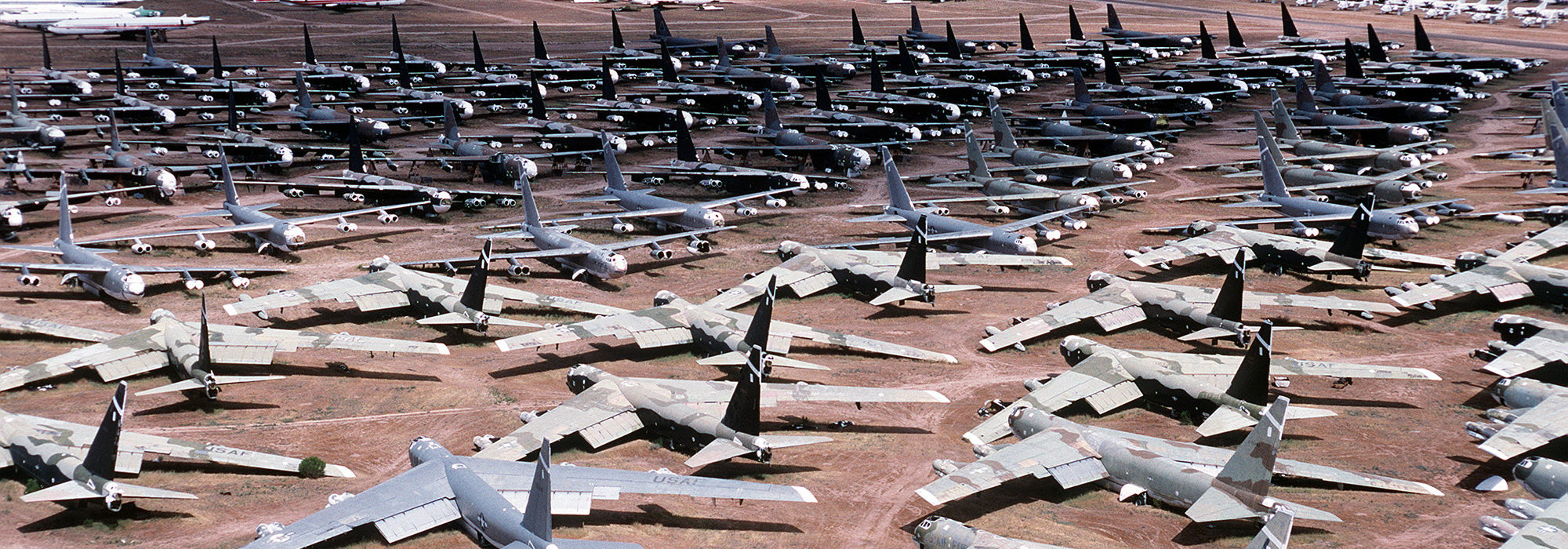Fliers of Tucson
This story was originally published April 29, 2022.
Their names are inextricably linked. Though in background Samuel Howard Davis and Oscar Monthan were nothing alike, these two World War I-era Army pilots met similarly tragic ends and their lives are honored in the naming of Davis-Monthan Air Force Base, Ariz.
Davis was of Southern heritage, having been born in rural Tennessee in 1896. When he was 8 years old, his family moved to Tucson, Ariz. He attended public schools and took a keen interest in agriculture. In 1913, he departed for Texas A&M but returned to the University of Arizona, from which he graduated in 1917.
The base’s other namesake came from England. His birth name was Oscar Tattersfield. His family in July 1900 moved to the United States and settled in Tucson. Oscar attended public schools and took an engineer degree at Boston School of Technology. He dropped “Tattersfield” and replaced it with his mother’s surname, Monthan.
When America entered the World War in April 1917, both Tucson men immediately joined the Army to become aviators.
Davis proved to be a superb pilot, receiving his wings and commission at Kelly Field, Tex., where he served out the war years as an instructor. After the armistice, he returned to Arizona but was soon assigned to instructor duty at Carlstrom Field, Fla.
On Dec. 28, 1921, Lieutenant Davis boarded a Curtiss JN-6 biplane and took off on a training flight. Seated in the front seat was his student, 2nd Lt. William Sinclair. The Jenny ran afoul of a mechanical problem, entered a tailspin, and crashed. Davis and Sinclair burned to death in the resulting fire.
Monthan’s demise came three years later.
As an engineer, Monthan at first was given Army technical work. In 1918, however, he received his wings and was stationed at Rockwell Field, Calif., where he was chief engineer, and McCook Field, Ohio, where he headed the Air Service’s Engineering School. In both places, he engaged in cutting-edge aeronautical work. He also became friends with Brig. Gen. William “Billy” Mitchell.
The Army next assigned Monthan to be chief engineer for the 5th Composite Group, Luke Field, Hawaii. On March 27, 1924, Monthan boarded a Martin MB-2 and, with Lt. W. G. Moore piloting, took off on a test flight. The bomber struck an obstacle at the end of the runway and crashed, killing Monthan and four others on board.
So run the stories of two men who came from widely separated parts of the world, with greatly varying backgrounds and interests, who both nevertheless ended up in Tucson, became outstanding pilots and Army officers, and died in doomed aircraft which they did not themselves personally command. They are even buried in the same spot—Evergreen Memorial Park in Tucson.
What is now Davis-Monthan Air Force Base began as a civilian airport, dedicated in 1927 by Charles Lindbergh, the famous “Spirit of St. Louis” aviator. Today, the base is home to the 355th Fighter Wing—an A-10 outfit—and the 309th Aerospace Maintenance and Regeneration Group—the “Boneyard” of mothballed aircraft and other services.
Samuel Howard Davis
- Born: Nov. 20, 1896, Dyer County, Tenn.
- Died: Dec. 28, 1921, DeSoto County, Fla.
- Colleges: Texas A&M, University of Arizona
- Occupation: U.S. military officer
- Citizenship: United States
- Service: United States Army Air Service
- Main Era: World War I
- Years Active: 1917-21
- Final Grade: Second lieutenant
- Interred: Evergreen Memorial Park, Tucson
Oscar Monthan
- Born: June 4, 1885, Dewsbury, England
- Died: March 27, 1924, Luke Field, Hawaii
- College: Boston School of Technology
- Occupations: Rancher, engineer, U.S. military officer
- Citizenship: United States (naturalized)
- Service: United States Army Air Service
- Main Era: World War I
- Years Active: 1917-24
- Final Grade: First lieutenant
- Interred: Evergreen Memorial Park, Tucson
Davis-Monthan Air Force Base

- State: Arizona
- Nearest City: Tucson
- Area: 16.6 sq mi / 10,633 acres
- Status: Open, operational
- Opened as Davis-Monthan Field (civil): Sept. 23, 1927
- Re-established as Tucson Army Air Base: April 17, 1941
- Renamed Davis-Monthan Army Air Field: Dec. 1, 1941
- Renamed Davis-Monthan Air Force Base: Jan. 13, 1948
- Current owner: Air Combat Command
- Former owners: Fourth Air Force, Second Air Force, Strategic Air Command, Tactical Air Command
- Home of: 355th Wing, 309th Aerospace Maintenance and Regeneration Group



